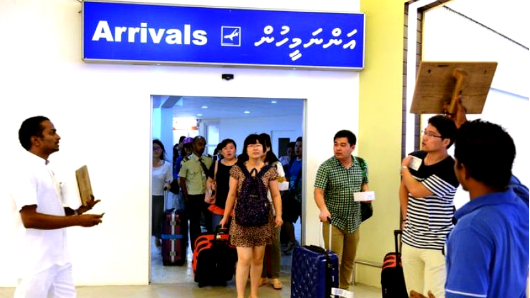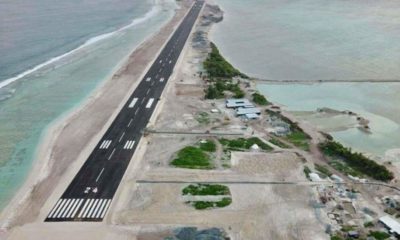Tourist arrivals to the Maldives increased by 5.7 percent in August compared to the same period last year, reaching a total of 110,144 visitors during the month.
The occupancy rate, however, declined by 4.1 percent from 75.2 percent in August 2014 to 71 percent in August 2015. The total bednights also fell by 3.6 percent, according to statistics from the tourism ministry.
The occupancy rate in resorts fell from 83.5 percent to 79.3 percent, but rose in guesthouses from 16.9 percent to 25.2 percent.
The occupancy rate has steadily fallen this year. The average duration of stay also fell from 6 days to 5.5 days.
After registering a four percent decline in July, arrivals from China increased by 7.8 percent in August, allaying fears of a sharp decline in the wake of a slowdown in the Chinese economy and a surprise devaluation of the Yuan.
China remains the largest source market for tourists to the Maldives with a 31.6 percent market share. The number of Chinese tourists from January to August reached 260,491, representing a 3.2 percent increase from the corresponding period in 2014.
Mifzal Ahmed, director of Mega Maldives Airlines – which pioneered direct services to China and currently flies to five Chinese cities – told The Maldives Independent that the airline was “cautiously optimistic for the Chinese market to the Maldives.”
While the Chinese economic downturn is a cause for concern, Mifzal explained that the stock market “plays a relatively smaller role for the majority of Chinese households than it does to Western households” as only six percent of Chinese own stocks.
Despite the stock market turmoil, Mifzal noted that the Chinese economy is still growing with high employment and rising wages.
“The Maldives ‘product’ remains attractive and newly weds and families will still probably rank Maldives as one of their top holiday destinations. We have momentum on our side, even though it may be slowing,” he said.
“The current government has set a target of 1.5 million tourists in 2016, and the Chinese will have to feature highly in that. So increased promotion and marketing in that country would also play a role.”
After reaching a milestone of one million visitors in 2013, followed by 1.2 million visitors the following year, the government’s target for 2015 is 1.4 million tourist arrivals.
Total arrivals at the end of August stood at 823,766 visitors, a 2.2 percent increase compared to the same period last year.
European visitors, traditionally the largest source market for the Maldives, meanwhile accounted for 42.1 percent of arrivals from January to August.
After China, Germany is the second largest market with 7.9 percent, followed by the United Kingdom (7.5 percent), Italy (5.3 percent), India (3.9 percent), France (3.6 percent), and Russia (3.5 percent).
Arrivals from Russia registered a steep decline of -38.9 percent from January to August.


















